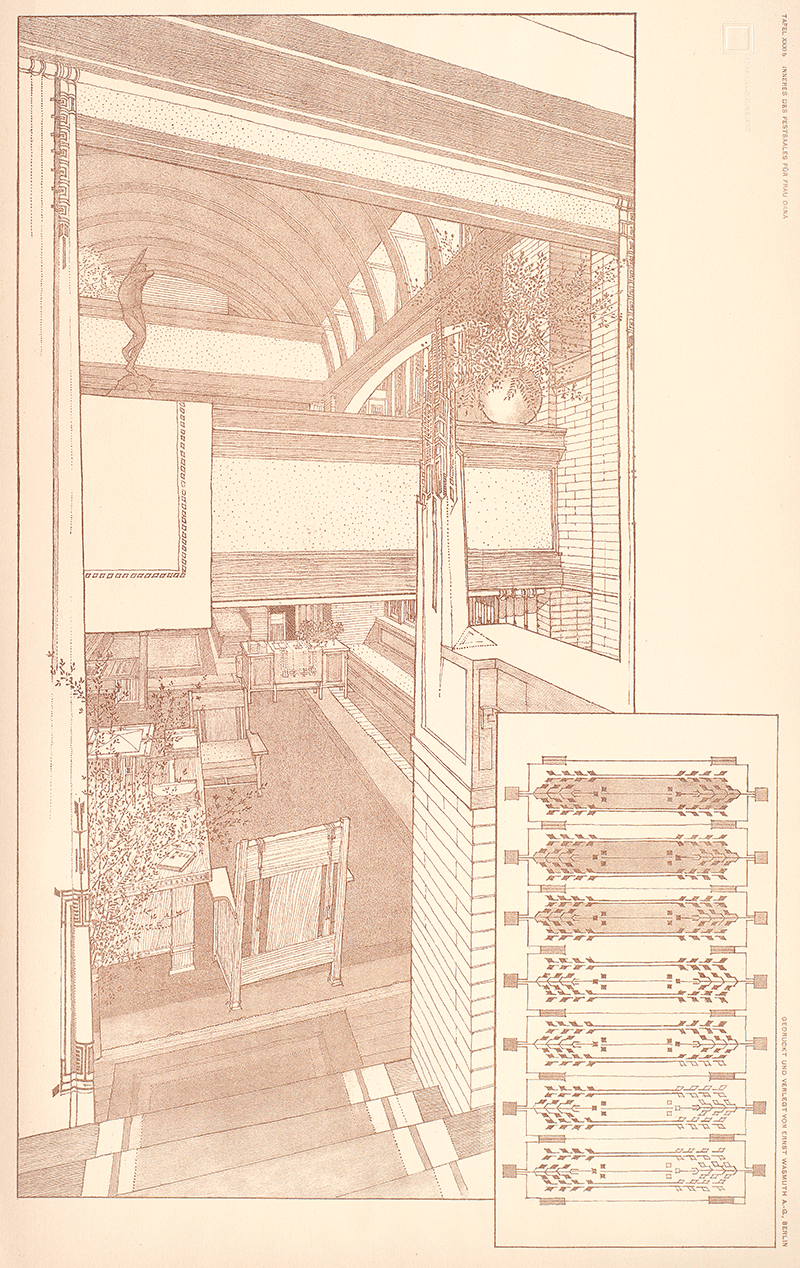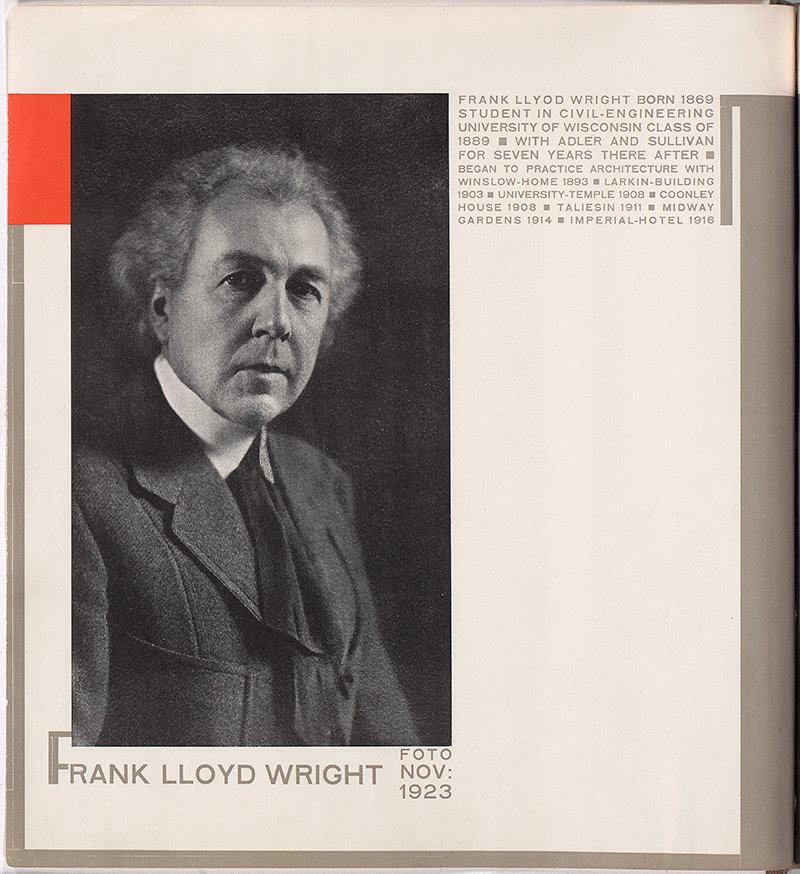Wright - American Icon
|
-
About this Collection
A product of the American heartland, Frank Lloyd Wright’s innovations in form and materials profoundly changed the face of architecture, especially residential architecture.
Born and raised in Wisconsin, he apprenticed with prominent Chicago architectural firms, notably Adler and Sullivan, in the 1880s. He took the anti-establishment views of Louis Sullivan to a new level of prominence and sophistication.
Wright's early Prairie School residences, such as the Robie House in Oak Park, Illinois (1909) changed the American home from a vertical, boxy composition of discrete rooms to a horizontal composition of open spaces revolving around a massive central hearth. He insisted on natural forms and materials as decoration, incorporating them into the very fabric of his structures.
Commercial buildings and public spaces designed by Wright were just as revolutionary.
By the late 1930s his turbulent career had stalled, but was instantly revived with the creation of Fallingwater, a summer residence in the Pennsylvania countryside, and the S.C. Johnson Wax Building in Racine, Wisconsin..
Wright's creativity and zeal for his vision never abated. His last major building, the spiraling Guggenheim Museum in New York (1959), was as controversial as his early works had been five decades earlier.
-
Interior of the Dana House in Springfield, Illinois, 1902
This interior rendering of the Dana House in Springfield, Illinois features Frank Lloyd Wright's signature window designs. It also depicts a dramatic view of the various levels of the house. Wright designed every aspect of his buildings, including all the furniture and interior decoration.
This plate is from the Wasmuth Portfolio of 1910.
-
Portrait of Frank Lloyd Wright in the Wendingen Edition
Photographic portrait of Frank Lloyd Wright published in the Wendingen Edition of his works. In 1925, Wright was 58 years old.
 View Image
View Image View Image
View Image